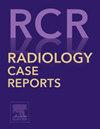Super-Selective Embolization Using Flow-Directed Microcatheter and 0.010-inch Microwire for Type II Endoleak Following Thoracic Endovascular Aortic Repair: A Three-Case Report
Q4 Medicine
引用次数: 0
Abstract
Type II endoleak (T2EL) following thoracic endovascular aortic repair (TEVAR) may lead to progressive aneurysm enlargement, necessitating further intervention. This report presents 3 cases of persistent T2EL with aneurysm growth after TEVAR, and managed through endovascular embolization using flow-directed microcatheters and 0.010-inch guidewires, employing N-butyl cyanoacrylate (NBCA) either alone or in combination with coils. Aneurysmal sac embolization was successfully performed in all cases, despite significant vascular tortuosity, resulting in favorable immediate outcomes without complications. A key advantage observed was the ability of flow-directed microcatheters to navigate into distal, tortuous feeding vessels that are typically inaccessible using conventional methods. While NBCA alone was effective for embolizing small sacs, a combination of coils and NBCA provided more controlled and stable embolization in larger sacs. However, follow-up computed tomography revealed new endoleaks in 2 cases, emphasizing the need for continued monitoring. While short-term results are promising, further studies are needed to assess long-term recurrence risks. This case series highlights the effectiveness of flow-directed microcatheters, 0.010-inch microwires, and targeted embolization techniques in managing T2EL following TEVAR.
使用定向微导管和0.010英寸微丝超选择性栓塞治疗胸血管内主动脉修补术后II型腔漏:3例报告
胸血管内主动脉修复术(TEVAR)后II型内漏(T2EL)可能导致动脉瘤进行性扩大,需要进一步干预。本报告报告了3例TEVAR术后伴有动脉瘤生长的持续性T2EL,并通过血管内栓塞治疗,使用定向微导管和0.010英寸导丝,使用n -氰基丙烯酸丁酯(NBCA)单独或联合线圈。尽管存在明显的血管扭曲,但所有病例均成功进行了动脉瘤囊栓塞,获得了良好的即时结果,无并发症。观察到的一个关键优势是,流动导向微导管能够导航到远端,弯曲的供血血管,这是传统方法通常无法到达的。虽然NBCA单独栓塞小囊是有效的,但在大囊中,线圈和NBCA的组合提供了更可控和稳定的栓塞。然而,随访的计算机断层扫描显示2例新的内漏,强调需要继续监测。虽然短期结果很有希望,但需要进一步的研究来评估长期复发的风险。本病例系列强调了定向微导管、0.010英寸微丝和靶向栓塞技术在治疗TEVAR后T2EL中的有效性。
本文章由计算机程序翻译,如有差异,请以英文原文为准。
求助全文
约1分钟内获得全文
求助全文
来源期刊

Radiology Case Reports
Medicine-Radiology, Nuclear Medicine and Imaging
CiteScore
1.10
自引率
0.00%
发文量
1074
审稿时长
30 days
期刊介绍:
The content of this journal is exclusively case reports that feature diagnostic imaging. Categories in which case reports can be placed include the musculoskeletal system, spine, central nervous system, head and neck, cardiovascular, chest, gastrointestinal, genitourinary, multisystem, pediatric, emergency, women''s imaging, oncologic, normal variants, medical devices, foreign bodies, interventional radiology, nuclear medicine, molecular imaging, ultrasonography, imaging artifacts, forensic, anthropological, and medical-legal. Articles must be well-documented and include a review of the appropriate literature.
 求助内容:
求助内容: 应助结果提醒方式:
应助结果提醒方式:


